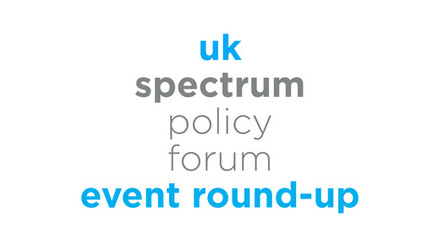Cluster 1 ‘Connectivity from the Sky’ event roundup
On 15 December 2022, the UK Spectrum Policy Forum hosted its final event of the year.
‘Connectivity from the Sky’ brought together speakers at the cutting edge of sky-to-cellular connectivity, providing a unique insight into the near future for this field. Here’s a roundup with some of the key themes from the event.
Architecture
A crucial unifying factor amongst the diverse solutions and concepts presented was the fact that any future sky-to-cellular connectivity must operate with existing mobile handsets, being as seamless as possible to use, giving greater connectivity to the user with little, if any, effort on their part.
This approach is very promising for the future of the technology, especially as it became clear at the UK SPF workshop that old-style satellite phones, with their bulky aerials, would not be making a return to facilitate connectivity from the sky.
Indeed, one solution was compatible with all phones tested, from Nokia 3310s to the latest iPhones. Future use cases for connectivity from the sky are being predicated on the assumption that the user need not purchase any more devices to connect beyond their basic mobile phone. These advances have been made possible by advances in Low Earth Orbit (LEO) and High Altitude Platform (HAP) technology, which can provide lower latency connectivity for greater numbers of people. It was not just HAPs and LEOs discussed but also advancements in Geostationary Earth Orbit (GEO) satellites evolving to connect to ‘ordinary’ mobile devices.
What does this mean for the mobile sector?
When asked whether connectivity from the sky will replace terrestrial mobile networks, the answer given was an emphatic ‘no’.
It was agreed by all speakers that terrestrial networks would remain the core backbone of the mobile network. Connectivity from the sky was instead presented as a way to cover not-spots, as well as to provide connectivity to users in remote and rural areas. This will allow mobile operators and others to greatly increase their geographic coverage and improve their resilience to natural disasters.
Sky-based solutions were also proposed for incidents where a great deal of connectivity was needed quickly. One sky-based solution was shown to be able to provide additional cellular capacity quickly to support the terrestrial network in times of crisis and emergencies.
Sky-based solutions therefore offer MNOs a chance to make networks much more resilient and to improve levels of public safety by vastly increasing the area in which people could stay in touch with the emergency services.
Regulatory questions
Any new technology brings with it regulatory questions. The future status of spectrum for LEO satellites and HAPs is a hot topic at WRC-23. There is also a gap in the regulation in particular when mobile frequencies are transmitted/received outside a country’s national territory such as in international waters. Clarity on the regulations is needed in this area.
Such questions are ones that need to be answered by regulators in a way which facilitates innovation in this extremely promising field.
This event provided an interesting and extremely valuable insight into the future of not just connectivity from the sky, but connectivity generally, and we look forward to seeing where the technology will lead.
Slides used can be accessed below

Sophie Greaves
Sophie Greaves is Associate Director for Digital Infrastructure at techUK, overseeing the Communications Infrastructure and Services Programme at techUK, and the UK Spectrum Policy Forum.

Phil Reid
Phil is acting Head of Telecoms and Spectrum policy at techUK, where he leads the Communications, Infrastructure and Services Programme. This focuses on promoting the benefits and innovations of connectivity and tackles the barriers of digital infrsatructre rollout.

Tales Gaspar
Tales has a background in law and economics, with previous experience in the regulation of new technologies and infrastructure.

Josh Turpin
Josh joined techUK as a Programme Manager for Telecoms and Net Zero in August 2024.








